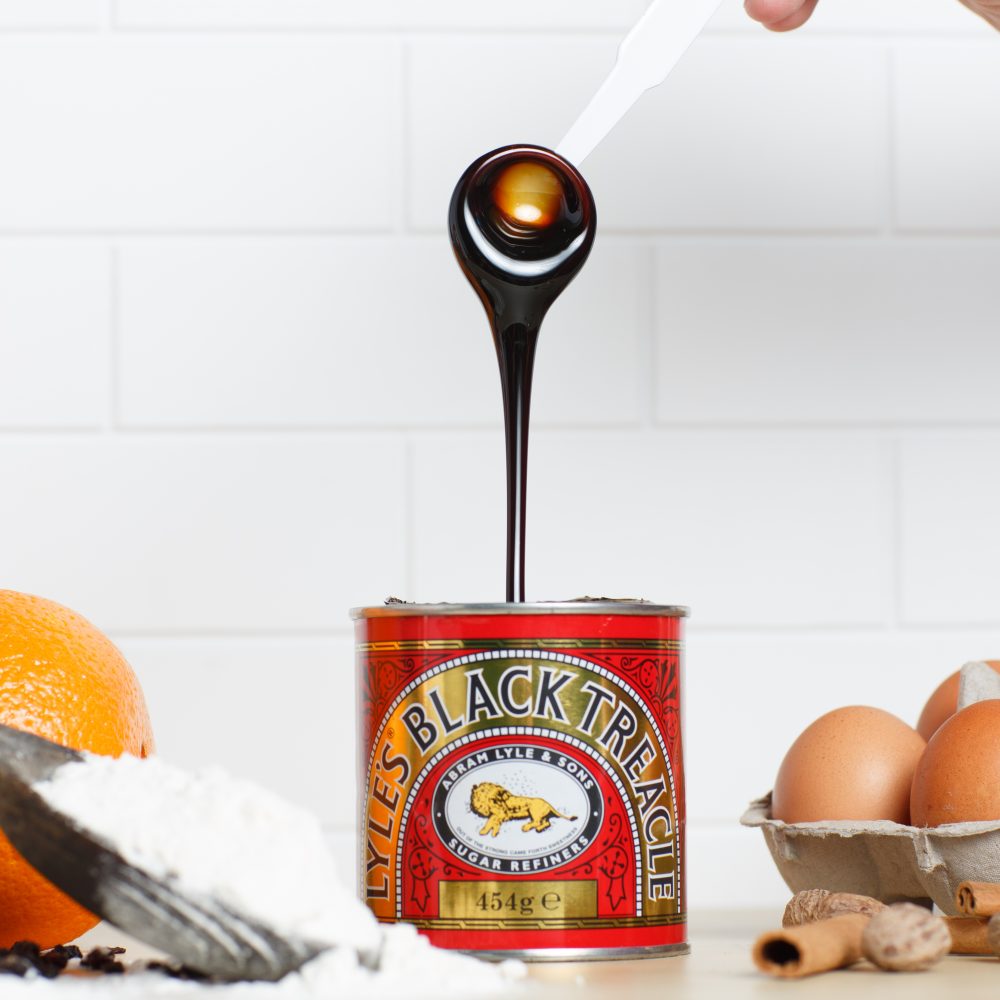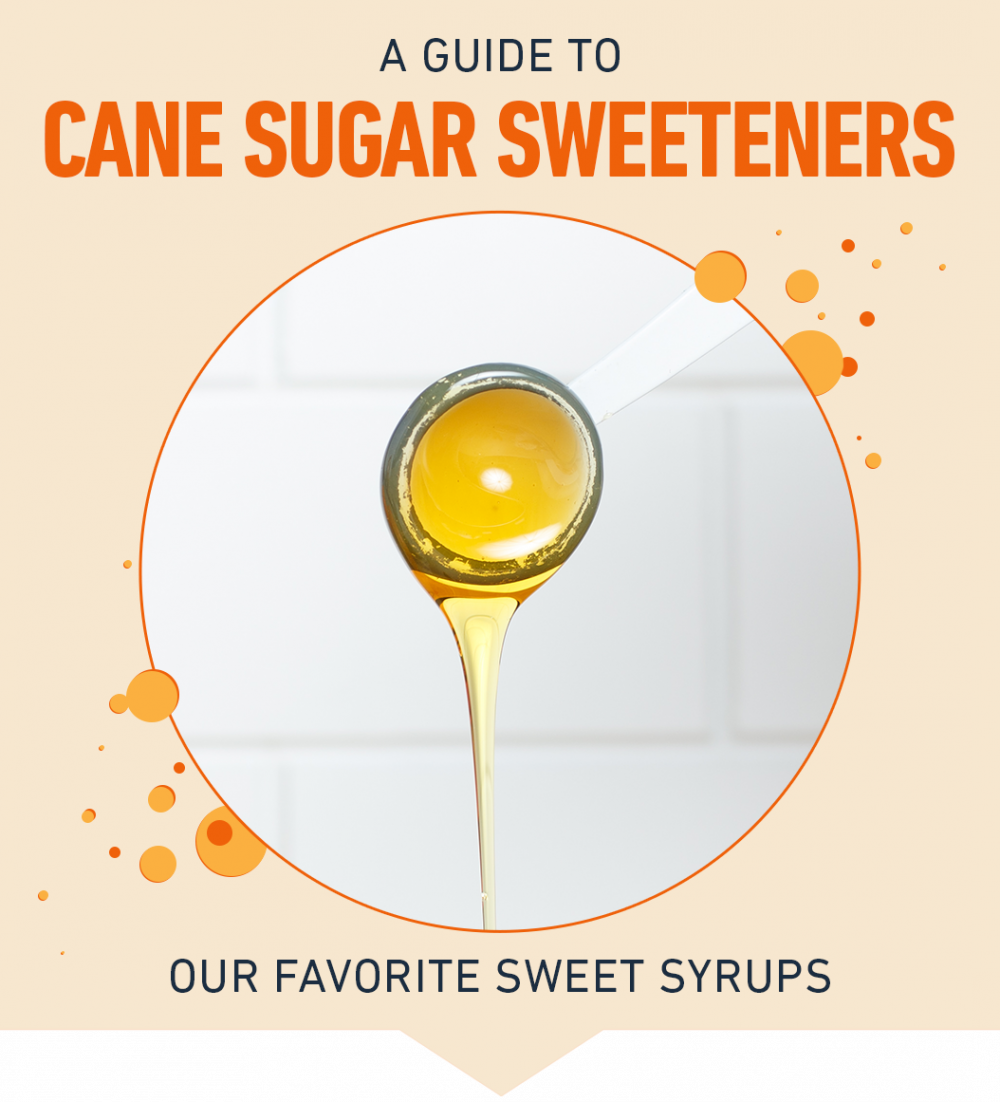As anyone familiar with Southern barbecue knows, molasses isn’t just for gingerbread. But molasses isn’t always the right cane syrup for everything, either–a bit too strong for pancakes or pecan pie, and a bit too sweet for some sauces and marinades. Luckily, there’s a whole world of sugar cane-based sweeteners out there, each containing their own range that lends them better to different applications, be they sweet or savory. Because, of course, all sugar cane sweeteners are not the same!
Difference Between Corn Syrup & Cane Sugar Syrup
Different from corn syrup you can find at the grocery store, which is manufactured from cornstarch and processed with a high percentage of glucose, cane sugar syrup comes from the sugar cane plant. The sugar is separated by grinding the cane to extract the juice, boiling it until it’s thick. Thickened juice is spun in a centrifuge to isolate the raw sugar crystals, which are refined and packaged as the granulated sugar we know. The sticky liquid that separates is molasses.
We usually avoid baking with corn syrup, other than for candy-making, because it lacks any flavor beyond sweet. The various kinds of cane sugar, on the other hand, offer a more intense, complex array of caramelization, bitterness and even coffee-like notes. That makes them perfect for adding depth to recipes from barbecue sauce or sticky toffee pudding.
With that in mind, we tasted several brands of four sweeteners made from cane sugar and dove in to answer some of the most common questions. What’s the difference between molasses and cane syrup? Does the color of a sweetener matter? Can you substitute golden syrup with treacle? Is there anything right for desserts that can also work in savory dishes like baked beans?
Here’s a breakdown–from light to dark–and our picks for each one.
All Sugar Cane Sweeteners are Not the Same!
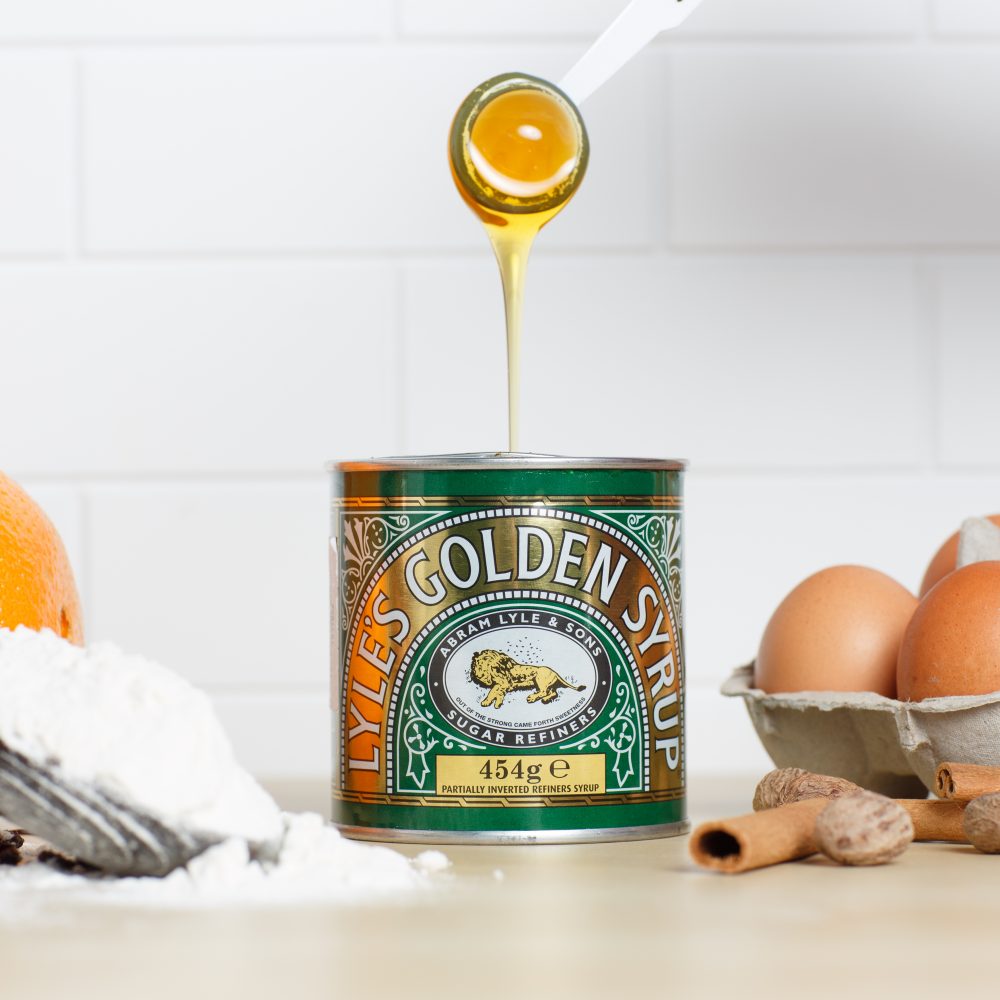
Golden Syrup
The lightest on the spectrum, golden syrup is sweet and buttery–containing the same properties as corn syrup–but made by refining cane sugar juice into sugar or by treating a sugar solution with acid. Commonly used in the U.K. and referred to as “treacle” or “light treacle,” it looks similar to honey but is richer with a few notes of dark sugar. Drizzle over pancakes, waffles or french toast like you would maple syrup, or use while baking, like in pecan pie or for candy-making. It also works well over fruit or stirred into cocktails as a substitute for agave or simple syrup. For the best, we turn to Lyle’s Golden Syrup, which has remained unchanged since it was first made in East London in 1881. This sugar cane syrup is light and sweet, with just enough flavor to keep it interesting. The slightly caramelized notes make it perfect for drizzling atop baked goods, but its rich buttery taste also works well for a savory soup or stew.
Buy Lyle’s Golden Syrup here.
Cane Syrup
The happy medium, cane syrup is a step darker than golden syrup, rich and heady with notes of dark sugar and rum. Whereas molasses is a byproduct of sugar refining, cane syrup is made from raw pressed cane juice that’s boiled down, similar to how maple syrup is produced. We still like cane syrup on pancakes and waffles, though it wouldn’t be for everyone due to the deeper flavor. Instead its main application is for cooking and baking, especially for those looking for the heady essence of molasses without the bitterness and acidity. It works wonderfully in cookies, gingerbread or marinades, as well as certain cocktails like an Old-Fashioned, where the dark sugars enhance the sugary notes in the bourbon. Steen's Cane Syrup is our go-to, as its sweet richness is a lighter but still flavorful alternative to molasses. A staple in Southern cooking, Steen’s is made from 100% pure cane syrup with nothing added or extracted.
Buy Steen's Cane Syrup here.
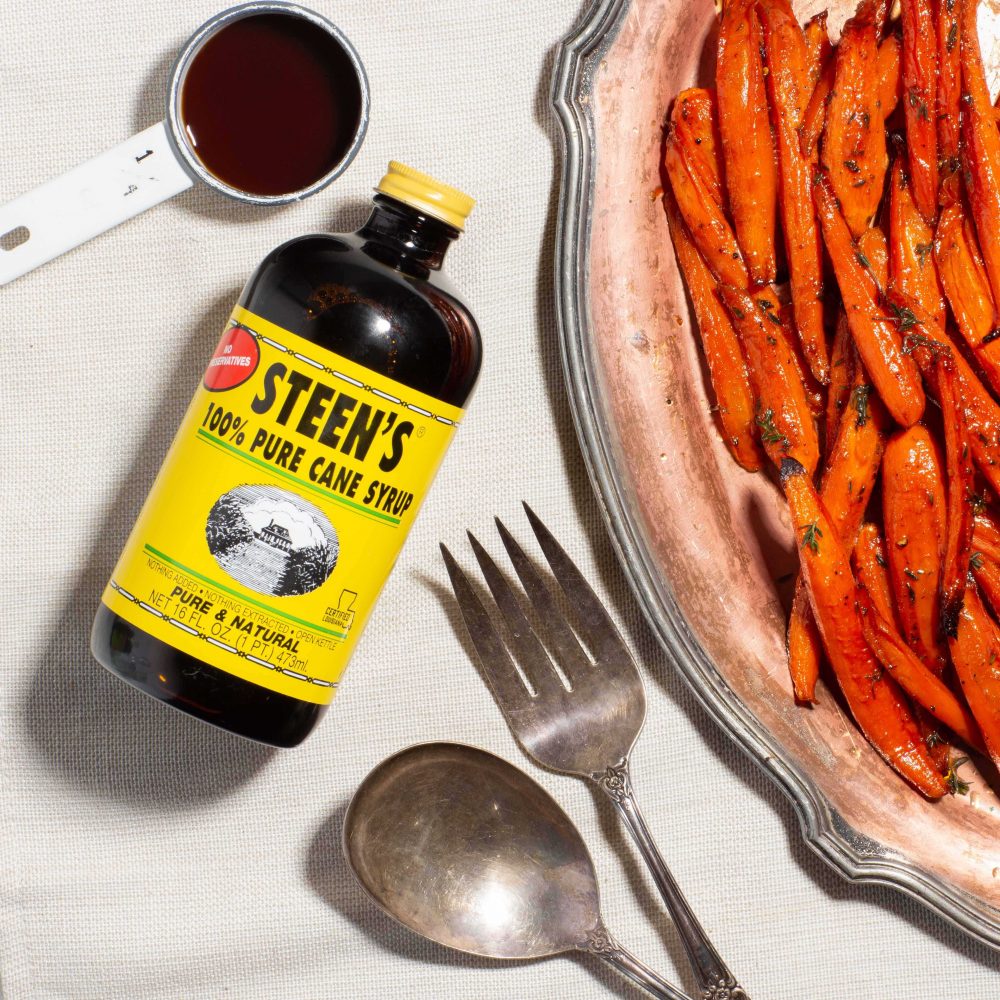
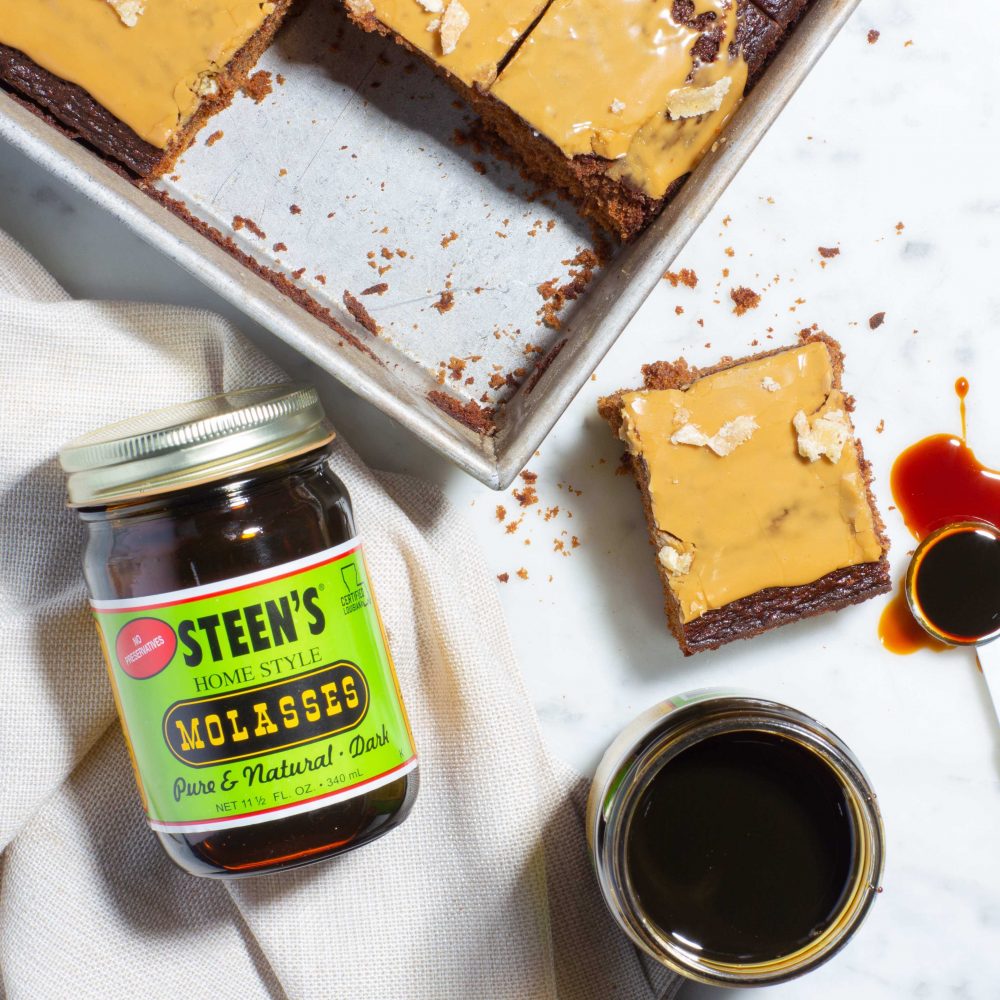
Molasses
Generally speaking, the darker the syrup, the stronger the flavor, and molasses is deep with rich caramel tones. A result of isolating sugar crystals from boiled cane juice, the dark brown liquid is sweet and more intense, the kind of flavor you may associate with gingerbread. However, it can be used for far more than baked goods as it’s great when added to sauces, roasted veggies, baked beans, brown bread and barbecue sauce. Our favorite is Steen’s Molasses, from a 4th-generation family company whose products became a Southern Louisiana staple in the 1950s. Their dark unsulphured molasses is rich and sweet with an almost tangy flavor—with much more complexity than what you can find in the grocery store. Unlike robust or black strap molasses, it has very little bitterness and an almost smoky flavor.
Buy Steen’s Molasses here.
Treacle
On the darkest end of the spectrum is black treacle, or “dark treacle,” a mixture of cane molasses and syrup, forming a dark, almost black, thick, ultrasticky sweetener with bitter notes and a flavor similar to toffee. This version of treacle is commonly used more to add flavor to recipes rather than sweetness, as a little bit of the super concentrated stuff goes a long way. A spoonful to baked goods adds a great flavor without too much sweetness—it’s less sweet than molasses—such as treacle tarts, sticky toffee pudding or fruit cake. Or add to sauces, rubs or marinades. We prefer Lyle's Black Treacle. Originally produced in East London in 1950, it is most comparable to American blackstrap molasses, but thicker, much smoother and more mellow in flavor.
Buy Lyle's Black Treacle here.
